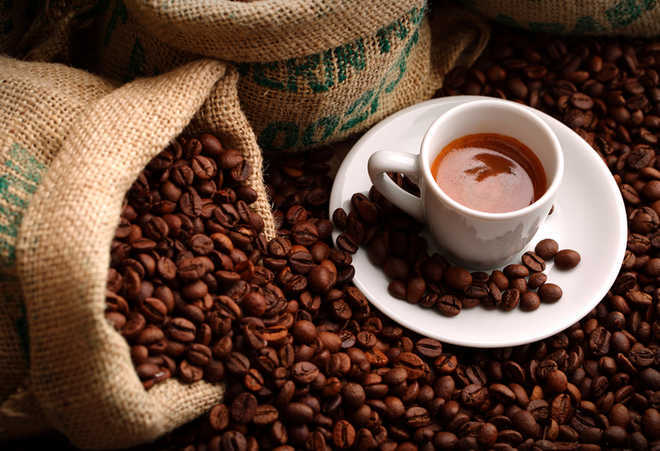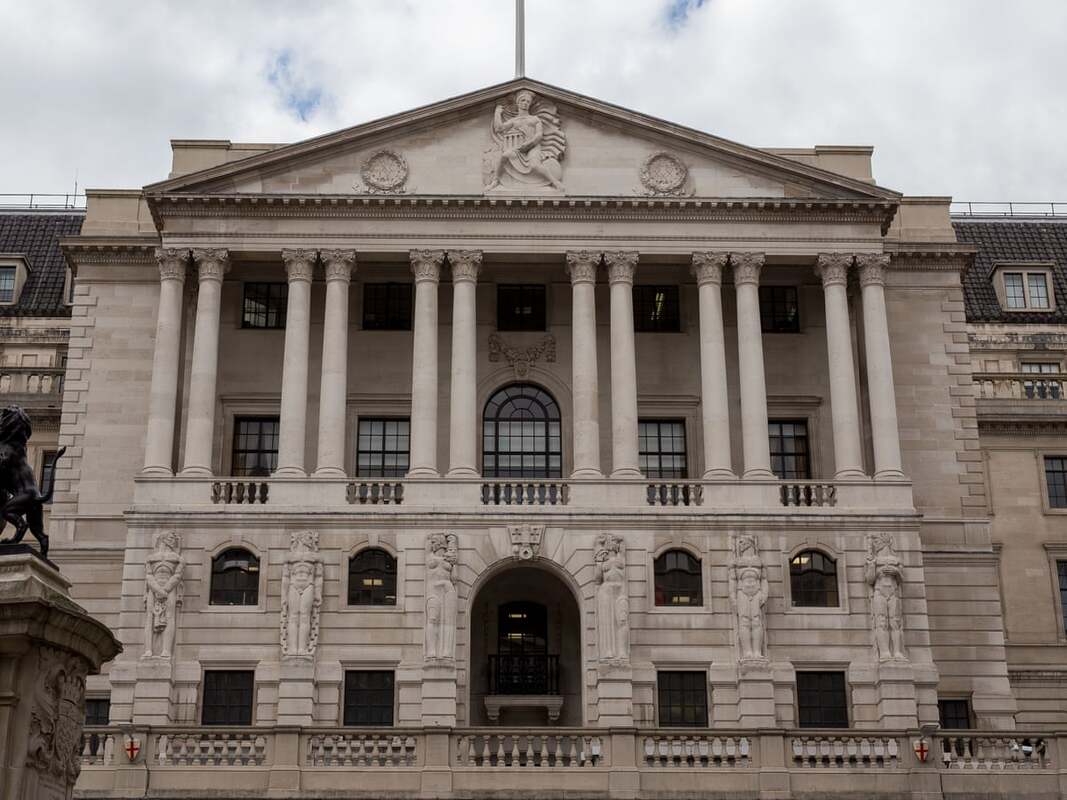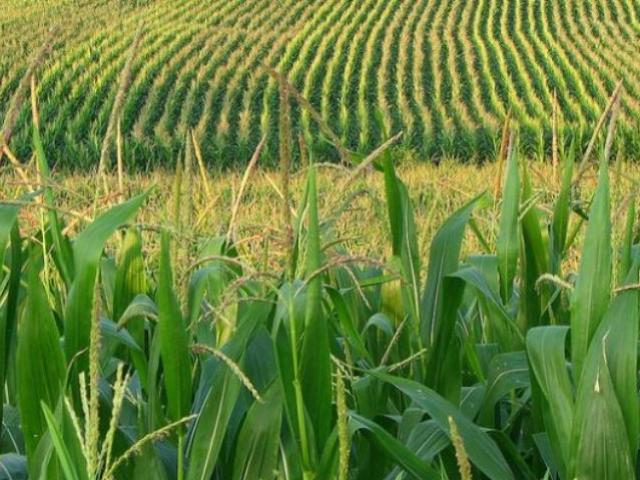The gas market has long been segmented between geographical regions, but the ramp-up in new supply of liquefied natural gas (LNG) and growing liquidity in spot trading over the past several years has helped transform it into a global market. This evolution comes at a price, as Europe and North Asia now compete for a finite supply of LNG, which results in bidding wars that can cause spot rates to surge. Supplies are already very tight coming into the summer months and this could get worse if there is a cold winter. Currently, there is strong competition between Europe and Asia and that is driving prices higher. European gas inventories are the lowest in more than a decade for this time of year, with the region’s benchmark surging to the highest in almost 13 years, while rates in the U.S. and Asia have jumped to the highest seasonal level in years. There have been surpise developments in China too as they are set to become the world's top importer of LNG for the first time this year, overtaking Japan. China is stockpiling supplies of LNG in order to power its booming economy and help it shift away from dirty fossil fuels such as coal. The demand from China over the last few years has outstripped even the most bullish analyst estimates. But as we've seen, the LNG market is very competitive between Asia and Europe and Asian end users are increasing prices to attract supplies away from Europe. Consequently, Europe’s end-users have been forced to depend more on Russian pipeline supplies. Yet Gazprom PJSC’s unwillingness to ship extra gas via Ukraine has been one of the key factors for surging prices at the Dutch Title Transfer Facility, the spot benchmark for Europe, to the highest level since 2008. Analysts see TTF prices continuing to rise through 2021 with strong demand. The sitatuation is exercerbated by the energy demands caused by extreme weather. Last winter in Asia was bitterly cold and now there are heat waves in Western U.S. as well as severe droughts across the globe that are reducing hydro output. With these factors in the melting pot, and memories of record-high prices in the Asian spot LNG last winter, importers in China, Japan, South Korea and Taiwan are buying up shipments for delivery between Novemeber and February. Chinese importers got their knuckles wrapped last year for not being prepared enough so it is highly unlikely they'll want a repeat of that. The Japanese government last month asked utilities to ensure stable fuel supplies this summer and winter amid forecasts for abnormally thin power reserves. Traders at Japan’s biggest importers said that they have been under more pressure to stock up on fuel and even restart retired gas-fired power plants. In the U.S., Henry Hub futures prices have more than doubled over the past year to the highest seasonal level since 2014. Inventories are 5.8% below normal for the time of year, the widest deficit since 2019 on a seasonal basis, signaling tighter supplies for next winter. Shipping restraints could also add to supply issues this winter with the chances of congestion in the Panama Canal running high. This will force U.S. LNG cargoes enroute to Asia to take a longer route around the Cape of Good Hope or the Suez Canal, which again, will limit availability. Can these supply issues will resolved ahead of time? If the Nord Stream 2 pipleine is started early, then this could help to avoid a supply crunch and add much needed supply to Europe. However, the pipeline that connects Russia to Germany has been plagued with delays because of U.S. sanctions. Currently, the pre-commissioning work is underway but there are no guarnuntess of this pipeline being completed in time. Of course, the weather has the last say in this and if there are milder winters across the globe, then inventories will go further. However, we'll have to wait and see on that front. In the meatime, it is highly probable that supply will remain tight for several years as the industry makes up for the lack of new supply investment in 2020 and the market catches up with strong demand.
0 Comments
Its a similar situation in Europe where the steel market is seeing a similar post-pandemic bounceback. The supply chain is restocking but constraints such as the tariffs on imported material are having an impact. However, in the rest of the world, global steel production seems to be slowing as raw materials prices, such as iron ore, are easing.
Capital Economics reported global daily steel production in May came in lower than April, as output in China dipped. The World Steel Association reported global steel production rose by an impressive 16.5% year over year in May. However, base effects are at play here becuase this number is compared against a 2020 reference point during which many countries were only starting to emerge from national lockdowns in May 2020. Looking at the month-over-month growth rate, daily global steel output fell by 0.4% in May following a 3.5% rise in April. In conjunction with this, we've been hearing dire warnings from Beijing’s about manipulative speculative pricing as well as restrictions on credit for construction. There is also pressure on polluting industries to reduce emissions and all of these factors have combined to cause a sharp correction in iron ore prices, which are now down 9% on the Dalian exchange to $173/ton this week.
Brazil Coffee Crop Analysts Safras & Mercado have estimated that almost 40% of the new Brazil coffee crop has been harvested. The new crop is forecast to be 56.50 million bags, therefore, based on the analysts estimate, 23 million bags of the new crop have been harvested. This coffee crop is made up of around 15 million bags of conilon robusta coffee, and approximately 8 million bags of arabica coffee harvested so far. The Brazil harvest at this time last year was 41% harvested so based on the numbers, this year is running marginally slower at 40% Exports Shipments by exporting countries to all destinations totalled 11.40 million 60-kg bags in April 2021, compared with 11.29 million bags in April 2020. As a result, total exports over the first 7 months of coffee year 2020/21 amounted to 77.52 million bags compared to 74.49 million bags over the same period in coffee year 2019/20. Cumulative exports from May 2020 to April 2021 are estimated at 130.40 million bags, a small decrease of 0.48% compared with the 130.97 million bags recorded from May 2019 to April 2020. World Consumption & Production World consumption for coffee year 2020/21 is projected at 167.58 million bags, an increase of 1.9% on its level of 164.43 million bags in coffee year 2019/20. Although world consumption is increasing, it remains 1.2% below world production. However, with prospects of lower production in Brazil for coffee year 2021/22 and the reductions in other countries, world consumption is likely to exceed world production in coffee year 2021/22. Total production for coffee year 2020/21 is estimated at 169.60 million bags, representing a 0.4% increase on 168.94 million bags in coffee year 2019/20. The ICO Indicator In May 2021, the ICO composite indicator rose by 10.4% to 134.78 US cents/lb, the highest monthly average since the level of 137.68 US Cents/lb registered in February 2017. The ICO composite indicator price provides an overall benchmark for the price of green coffee of all major origins and type, and is considered to be the best available measure of levels of green coffee transactions on a global basis. Demand Prospects We will continue to see an increase in demand as covid-19 restrictions are lifted in major coffee consuming markets. In addition to this, the rapid progress of vaccine programmes in these countries is contributing to the increase in demand as people become more confident in the economic recovery and feel safer about getting back to some degree of normality. Heatwave
The Pacific Northwest braces for a heatwave as and hotter weather begins to expand across more of the country. Forecast suggest that there could be record-breaking temperatures in the Pacific Northwest and across the border in Canada. Even though we are still a few weeks away from mid summer, there have been some early heatwave temeratures already and this is driving the Nymex gas prices higher and building momentum as prices comfortably clear the $3.00 level. NGI’s Spot Gas National Avg. climbed 5.5 cents to $3.150. Triple-digit temperatures are expected throughout parts of Oregon and Washington. Portland could crack the mercury at the 110-degree mark. Seattle, which is expected to top 100, could experience temperatures around 30 to 40 degrees above normal and challenge daily record highs. The dangerous heat is forecast to peak from Saturday through Monday as high pressure settles in and enables temperatures to climb to new heights, according to AccuWeather. Average highs in June can be anywhere from the 70s in eastern Washington and Oregon to the 80s in western areas into Idaho. The all-time record high of 118 degrees may be approached in Washington Sunday and Monday, according to AccuWeather. Oregon can also reach its own all-time record of 117. Storage Data The Energy Information Administration (EIA) reported a modest 55 Bcf injection into storage. This figure was well below historical levels, coming in 60 Bcf below last year’s injection and 28 Bcf below the five-year average. This suggests a tight supply/demand balance which has been expected, but it remains to be seen just how tight this can get throught he summer. Other factors to consider are higher wind and nuclear power output and it is expected that these will increase in the weeks ahead which may dampen demand for natural gas and ease the tight storage situation. Indeed, in the last week, wind power generation has been very low coming in at 11.8GWh lower than the same week last year. In conjuntion with the total US power load increasing 11% year on year, which is one of the highest totals for mid-June in more than a decade, its no surpise to see naturage gas demand increasing. However, with this said, it is still unclear as to whether next week's numbers show tigher storage thta will fuel the rally in prices.
The Bank has kept both rates and QE on hold this month, and the committee decided against offering any tangible hints of future tightening. Indeed, the lack of any hints about rate hike timing is probably becuase they don't see the need to guide the markets at this time.
The markets were pricing in more than two hikes by the end of 2023, prior to the policy meeting. However, with continued economic recovery and the success of the vaccination program resulting in fading concerns about Covid-19, then it is possible that talk about rate hiking will gain momemtum through the next few quarters. If we throw inflation into the mix as well, we need ask the question of whether inflation is transitory or structural. Indeed, the latest inflation reading was higher than expected, and the BoE expects inflation to exceed 3% at some point this year, however, they also believe that price pressures will subside through 2022. This means that there isn't an appetite to ease stimulus any time soon, given the expectation of inflation being transitory. The Bank’s May projections, which were based on roughly 20 basis points of tightening over two years, showed inflation roughly at target over the medium-term. In other words, the market pricing was broadly correct. However, since then, the markets have brought forward their expectations and are now pricing two rate hikes by the middle of 2023. On the QE side, it is unlikely that the BoE will reduce their programme early. Indeed, they are on track to stop expanding their balance sheet at the end of the year, having tapered the pace of purchases last month. Governor Andrew Bailey has made it clear that the BoE will unwind the size of it's balance sheet as part of the future tightening cycle. What isn't clear at this point is how they will approach this.
The crops across the Northern Plains could really use some rain to ease the drought stress. However, there is limited scope for rain over the next 10 days and crop stress is expected into the 16 to 30 day outlook.
Crop Conditions According to the USDA report, about 60% of the U.S. soybean crop was rated good or excellent, down from 62% a week earlier and 5% of the crop was blooming which is on par with the prior five-year average. About 65% of the U.S. corn crop was rated excellent at the start of the week, down from 68% the previous week. The spring wheat crop saw a sharp decline in crop conditions with only 27% rated good or excellent, down from 37% a week earlier. The drought conditions are really taking their toll on the spring wheat, particularly in North Dakota, the biggest producer of the variety, with about 18% seeing exceptional drought, the worst-possible rating, according to data from the U.S. Drought Monitor. Meanwhile, winter wheat was 17% harvested as of Sunday, up from 4% the previous week but well behind the prior five-year average of 26%. About 49% of the crop was rated good or excellent, up from 48% a week earlier. Export Inspections The USDA reports showed inspections for corn fell week-to-week while bean and wheat einspections increased. Corn inspections in the seven days that ended on June 17 totaled 1.48 million metric tons, down from 1.61 million tons the previous week. Soybean inspections were reported at 175,359 metric tons, up from 129,539 tons the prior week, government data show. That’s down from the 255,810 tons assessed during the same week in 2020. Wheat inspections totaled 548,578 metric tons last week which was up from the previous week at 499,774 tons, but down from the 686,036 tons examined during the same week last year. Since the start of the marketing year on the 1st of September, the government has inspected 55.5 million metric tons of corn for overseas delivery, up from 32.1 million tons during the same time frame last year. Soybean assessments since the beginning of September are now at 57 million metric tons, up from 36.5 million during the same period a year earlier. Wheat assessments from the start of the grain’s marketing year on June 1 now stand at 1.24 million metric tons, down from 1.5 million tons at this point in 2020. Drought Conditions Mid-June brought scorching heat to portions of the Northern Plains and very dry conditions. As a result, drought has expanded across some key areas of the Corn Belt. As of June 15, the U.S. Drought Monitor indicates that drought has deepened from the eastern Dakotas eastward across Iowa and Wisconsin and in southern Michigan. In Iowa, 95% of the state is now in abnormally dry to drought status. According to data from WeatherTrends360, mid-June 2021 was the fifth hottest and fourth driest in 30-plus years for Iowa. Hot weather helped to zap soil moisture and, of course, dry weather exacerbated drought conditions. According to the U.S. Drought Monitor, 41% of the U.S. corn crop is located in at least a moderate drought area. The good news is that the hot weather subsides in the week-ending June 24 across the northern Corn Belt, which will slow down evapotranspiration. However, there is little hope for substantial rainfall which is needed to even put a dent in drought conditions. WeatherTrends360 forecasts that through the week-ending June 24, 2021, precipitation will continue to run below normal across much of the northern Corn Belt, while the southern Corn Belt could see some wetter-than-normal conditions. Unfortunately, many of the areas that need the rain will miss remain dry. Meanwhile, conditions in the southern Corn Belt remain much more favorable for crop progress with few drought concerns. As we progress further into the growing season, concerns over the deepening drought in the northern Corn Belt will increase. Once corn enters the critical reproduction phase, the effects of the drought will really start to take a toll on yields. Unfortunately, WeatherTrends360 does not anticipate any long-term relief in terms of drought for the northern Corn Belt. The jump in eurozone PMI indicates strong growth in the second quarter with inflation pressures increasing further. The manufacturing PMI increased from 62.2 to 62.4 which is a small increment but at high levels. The numbers showed that lead times for inputs continued to improve for the Eurozone as a whole - this tells us that supply-side problems remain a bit of a drag on the recovery, although the manufacturing outlook looks good with strengthening order flows.
The Inflation Picture Inflation pressures continued to build as expected with input prices surging in June - this was the strongest increase in selling prices ever measured in the survey which confirms the narrative of increasing inflation for goods and services. However, headline inflation edged lower on energy prices in June, but goods and services inflation are set to continue their march higher. This will probably push inflation above 2% for the rest of the year. Goods inflation is already taking off and has increased from 0.4% in April to 1.2% in June which is to be expected given that producers are passing on higher input costs to consumers. This is likely to continue for some time yet. The headline inflation number decreased slightly in June but this isn't as important as the surge in goods and services inflation. Is this temporary? I don't have a crystal ball on this but risks do appear to be to the upside. Consumer Confidence Surges In June, consumer confidence increased to -3.3, which is getting close to all-time highs and certainly well above pre-pandemic levels. This suggests that there is a lot of pent up consumer demand as the economies reopen and confirms the optimism in the recovery itself that will probably continue over the next few quarters. The Eurozone economy is building momemtum here. Consumers have saved up a fair chunk of money through the pandemic and consumers haven't been able to spend on a wide vareity of goods. In addition, the furlough schemes have kept unemployment at bay and incomes have been retained. Savings in the bank and pent up demand adds up to a spending spree and high demand which will fuel the recovery for many months.
US Federal Reserve
The Fed has been consistent in saying that they will react to actual data and not forecasts, however, there seems to have been a change in the wind! More Fed members are actually talking about tapering based on the speed of the recovery and the pace of vaccinations. After reviewing their forecasts on growth and inflation for this year and the next, they have brought forward the possibility of increasing rates, as the dot-plot now shows two possible hikes for 2023. Chairman Powell said that they are thinking on thinking of tapering but clarified that they would provide plenty of notice in advance of any moves. Reserve Bank of Australia Meanwhile, the Reserve Bank of Australia released the Minutes of their latest meeting. Policymakers agreed it would be “premature” to consider ending the bond-buying program, and have reiterated that they do not expect a tight labour market and higher inflation until at least 2024. The statement was no surprise and tells us that the RBA is far behind the Fed. Australian Data Australia published May employment figures, which showed that the country added 115,200 positions in May, much better than expected. The Unemployment Rate contracted to 5.1%, returning to pre-pandemic levels. US Data The economic data in the US is painting a more dissapointing picture. May Retail Sales were down by 1.3% month on month which was worse than expected. Initial Jobless Claims for the week ended June 11th increased to 412K versus an expected decline to 359K. The Economic Calendar Looking forward at the Australian macroeconomic calendar, we've got the preliminary estimate of May Retail Sales and the preliminary June Commonwealth Bank PMIs. In the US, we've got the final version of Q1 GDP and PCE inflation as well as May Durable Goods Orders. On Friday, the focus will be on the country’s May Personal Consumption Expenditures Price Index, previously at 3.6% year on year. However, the focus will be on Fed Chair Jerome Powell, who will testify before Congress on Tuesday.
However, prices may have further to go on the downside. Lumber prices have been driven by the pandemic as there has been huge demand for wood for all of those home improvement projects that have spiked during the pandemic. Another factor is the souring house prices reasulting from very strong demand.
These kind of price increases attract the hedge funds and speculator and this drives prices up. But if these speculators get the jitters from something like higher inflation numbers for example, then they start to book profits, head for the exits and rotate into other asset classes. In addition, higher prices dampen demand and commerical interests and consumers may even defer buying until prices correct to lower levels. Lets take a closer look. The latest lumber production and sawmill capacity utilisation rates data out of the Western Wood Products Association, for March 2021, shows improvements in both Canada and the U.S. There is increased production at the sawmills and supply chain issues are being resolved as business and the economy reopens and more wood is moving through the pipeline. It is possible the top of softwood lumber prices has been reached, and buyers out-wait suppliers expecting lower prices now. Housing activity and demand across North America is very strong and there is a huge demand for wood, so the question now is: will increased lumber production at sawmills and a flowing supply chain satisfy demand for ongoing construction projects? The summer building season is in play and U.S. and Canadian home buying and house price growth continues to expand at a rate of knots. However, no one really knows if supply-demand balance has been reached.
This showed that 68% of the US corn crop is rated good to excellent, compared to 72% the previous week, and 71% for the same week last year. For soybeans, 62% of the crop is rated good to excellent, compared to 67% last week and 72% at the same stage last year.
Biofuels Update In May, there were reports that the The U.S. Environmental Protection Agency would be keeping biofuel blending mandates the same this year as they were last year. That would spare the U.S. refining industry the added costs associated with the usual annual expansion in renewable volume obligations under the Renewable Fuel Standard. THis comes at teh expense of the biofuel producers and the corn industry which depend on regular increases to grow their businesses. The RFS requires refiners to blend billions of gallons of biofuels like corn-based ethanol and biodiesel into their fuel, or buy tradable credits from those that do. The amount of biofuels typically increases each year with the objective of reducing foreign petroleum imports and also to help farmers. However, there have been developments recently in the biofuels market with reports that the US government is discussing the possibility of providing some relief to refiners on the biofuel blending mandate. This has created some uncertainty which has weighed on corn and soybean prices. A key measure for ethanol blending prices for refiners is the D6 RIN prices and these have increased more than 3-fold to an average of US$1.38 this year, compared to an average of US$0.43 in 2020. If the US government approves any support measures, then this could result in weaker domestic corn and soybean demand in the short term. |
AuthorTim the trader Archives
January 2025
Categories |
Site powered by Weebly. Managed by iPage










 RSS Feed
RSS Feed